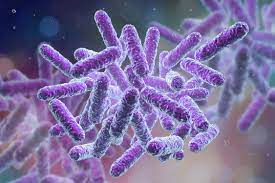
bacteria foes or Friend
I’ll come back to the exciting story of the microbiome; let me throw some light on, why we think dyadic while we know that the reality is a spectrum between two opposite poles of truth, black and white are two poles, and there are a lot of shades of grey.
Is our thought process entangled by the narrative of Greek philosophers Aristotle and Plato, or are we predisposed by our nature to think in black and white?
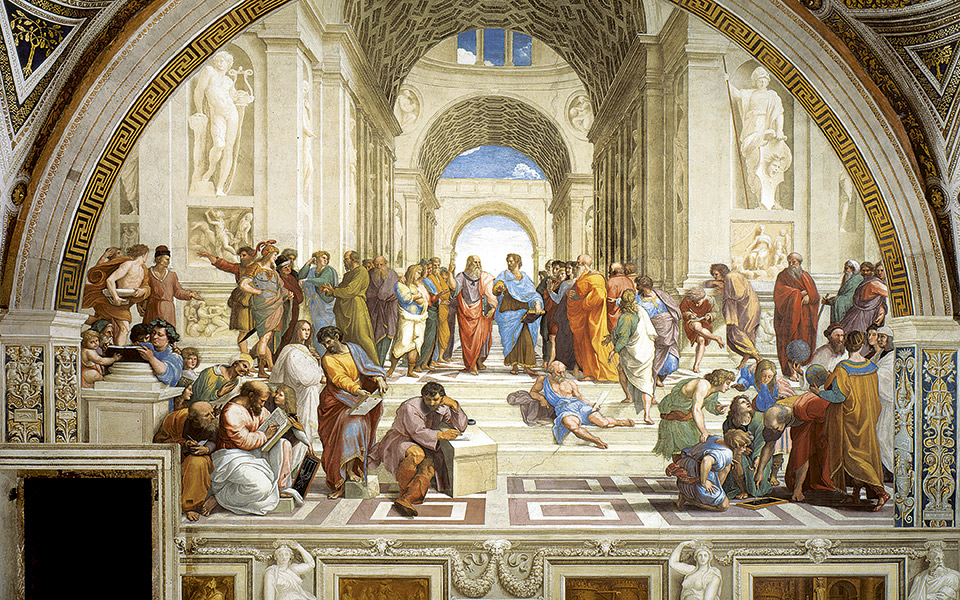
Aristotle proposed a proposition to figure out the reality of the dyadic version that can be written in duality of wrong or write and good or bad; there is no middle path, the principle of the excluded middle path, no intermediate course, and the principle of no contradiction.
While almost at the same time, Eastern philosopher and thinker Buddha gave the concept of catuskoti meaning four corners, four propositions to understand reality.

He insists that there are four possibilities regarding any statement: it might be accurate true (and true only), false (and false only), true and false, or neither true nor false.

1- (T)
2- (F)
3- (Both) true and false
4- (None) not true, not falsee
Quantum physics validates Buddhist philosophy as Schrodinger’s famous thought experiment of whether the cat in the box is dead or alive. It can be (live)or (desd) or (both) dead or alive and (non) dead or alive, until we open the box. Any possibility is valid.
Our brains got wired due to widespread Greek philosophy caused by the dominance of Western civilizations due to their batter tools and weapon, and they imposed their way of thinking all over the world’s nations and our disposition to make quick decisions.
Our brain is the most elegant object designed by Nature through billions of years of evolution; it is marvelous and very frugal in energy expenditure. We evolved to live in the stone age and didn’t evolve since then.
In the stone age, we had to make quick decisions, not very precise and accurate decisions, and we couldn’t afford that kind of habit of thinking for safety and security. The predator didn’t allow us to feel and act slow, and it was a survival game to live or die, quick decisions to fight, fight or freeze.
We still have the brains of the stone age, the institutions of midlevel, and technology God like, We are the commissary of God on Earth.
Long-lasting collective human intelligence, cooperation, and collaboration of the scientific community, philosophers, and thinkers figured out the codes of nature and life too and learned the language of Nature’s complexity. Now we can tweak life and synthesize life
We start understanding the true nature of bacteria and other microscopic life deeply and pragmatically.
Why do we think in black and white, wrong and write, good and bad, but Nature is like a spectrum in these two poles? Why our narratives mostly are dyadic, while Buddha gave us the concept of catuskoti to judge reality, and quantum physics has proved that.
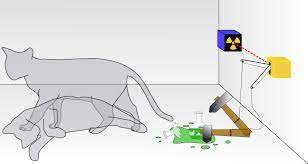
Humans tend to think in terms of black and white, good and evil, and right and wrong because it is a cognitive shortcut that allows us to make quick decisions and navigate the world around us. This type of binary thinking is known as dualism, a fundamental aspect of human psychology. However, this way of thinking is not always accurate or appropriate, as many situations in life are more complex and nuanced. Nature is a complex web of interactions and relationships, and it is not always possible to reduce it to simple dichotomies.
The concept of catuskoti, or “four possibilities,” as presented by Buddha, is a more nuanced way of understanding reality. It proposes that any statement can be true, false, true and false, or neither true nor false, depending on the context. This concept is similar to the idea of quantum physics, where subatomic particles can exist in multiple states at the same time, and their behavior can only be predicted
in probabilistic terms.
It is important to remember that our narratives, the way we understand and interpret reality, are shaped by our beliefs, experiences, and culture, and it is essential to be open-minded and consider different perspectives when trying to understand the complexities of the world.

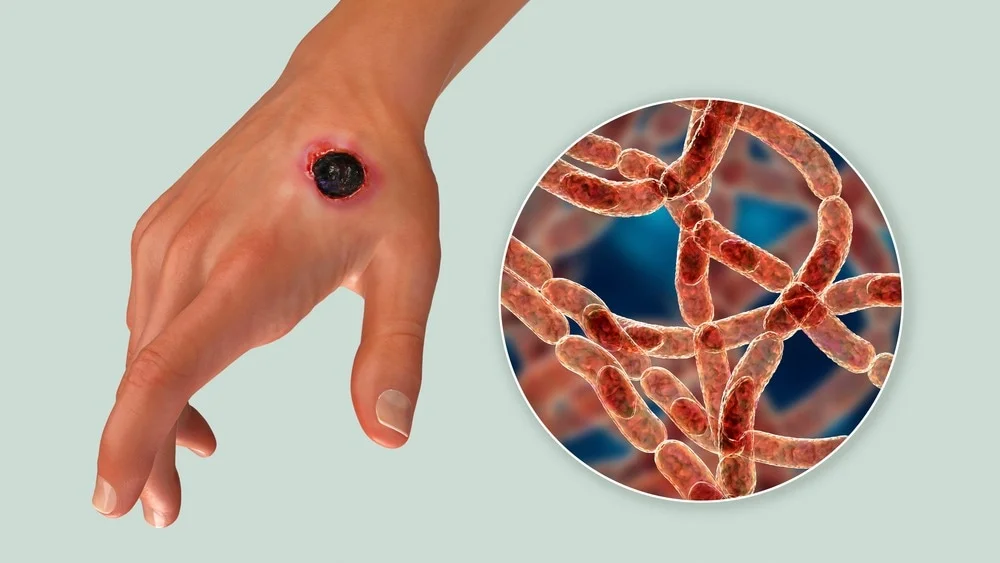
If traversing through the history of bacteria from 1870, a German physician, Robert Koch, who was working to curtail the epidemic of anthrax due to the bacterium Bacillus anthracis and the germ theory of Luis Pasture’s germ theory to the contemporary understanding, we embark on the narrative that bacteria are contextual. They don’t have morals. They can change their behavior in different environments.
Bacteria have been foes since the nineteen century, and these foes seem friends. We think they have morals, but studies and research show they are contextual.
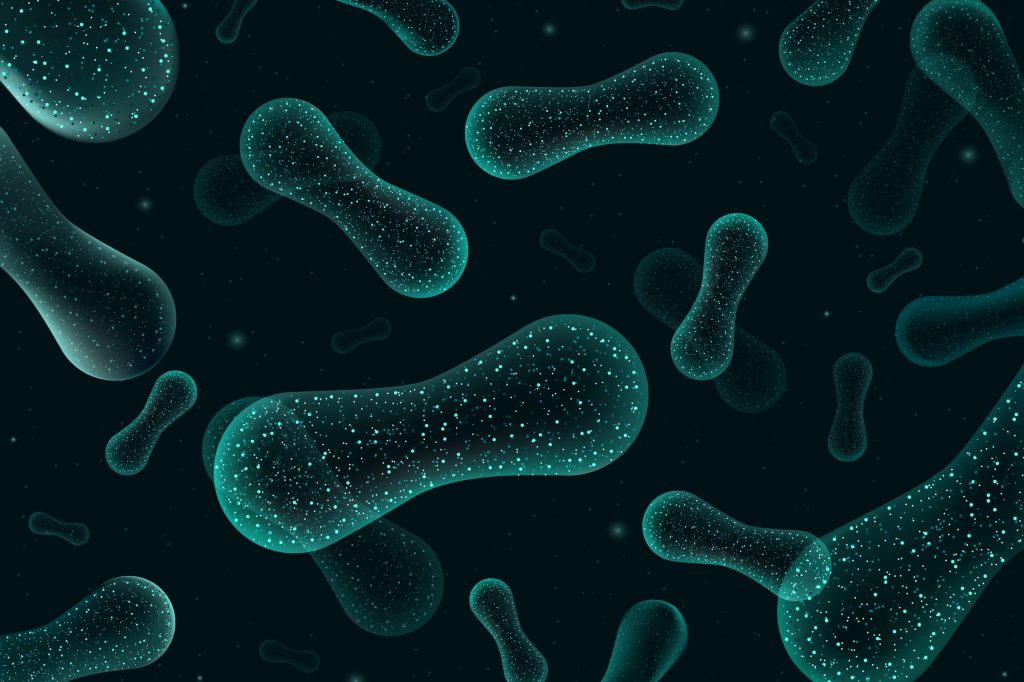
Bacteria have long been considered harmful organisms, but recent research has shown that many types of bacteria can be beneficial to humans. Studies have revealed that certain bacteria can help maintain a healthy gut microbiome, aid digestion, and even boost the immune system. However, it is essential to note that the behavior of bacteria is context-dependent and can change depending on the environment in which they live. As a result, the relationship between bacteria and humans is complex and multifaceted.
Bacteria are contextual; the anthrax experiment by Robert Koch and other contemporaries like Louis Pasture confirmed that microscopic organisms, the germ theory, germs, pathogens, or bringers of epidemics cause many diseases and suffering to communities worldwide.
Today we know this view is partially wrong, as explained in the Recent book (I Contain Multitude)
It confirmed that bacteria cause diseases, but they are in the minority, and we know now almost 100 trillion bacteria are living in our gut called gut microbial are very beneficial and significance essential in their substantial role in our health and well-being.
They not only process our food in the gut but also.
Can you give a detail descriptions of the role of gut microbiome, what task they perform to maintain our health?
The gut microbiome refers to the collection of microorganisms that live in the digestive tract. These microorganisms, including bacteria, viruses, and fungi, play a crucial role in maintaining human health. Some of the key tasks performed by the gut microbiome include:
* Digestion: The gut microbiome helps to break down complex carbohydrates, fibers, and other nutrients that the body is unable to digest on its own. This allows the body to extract more energy and nutrients from food.
* Immune function: The gut microbiome plays a critical role in regulating the immune system. It helps to train the immune system to recognize and respond to pathogens, while also preventing over-reaction to harmless antigens.
* Metabolism: The gut microbiome plays a role in regulating the body’s metabolism by influencing the absorption and utilization of nutrients.
* Mental health: The gut microbiome is also linked to mental health, with research suggesting that changes in the gut microbiome can affect mood and behavior.
* Protection against pathogens: The gut microbiome can also protect the body against pathogens by competing with harmful bacteria for nutrients and space, and by producing antimicrobial compounds.
Overall, the gut microbiome is essential for maintaining overall health and well-being, and an imbalance in the gut microbiome can lead to a variety of health problems.
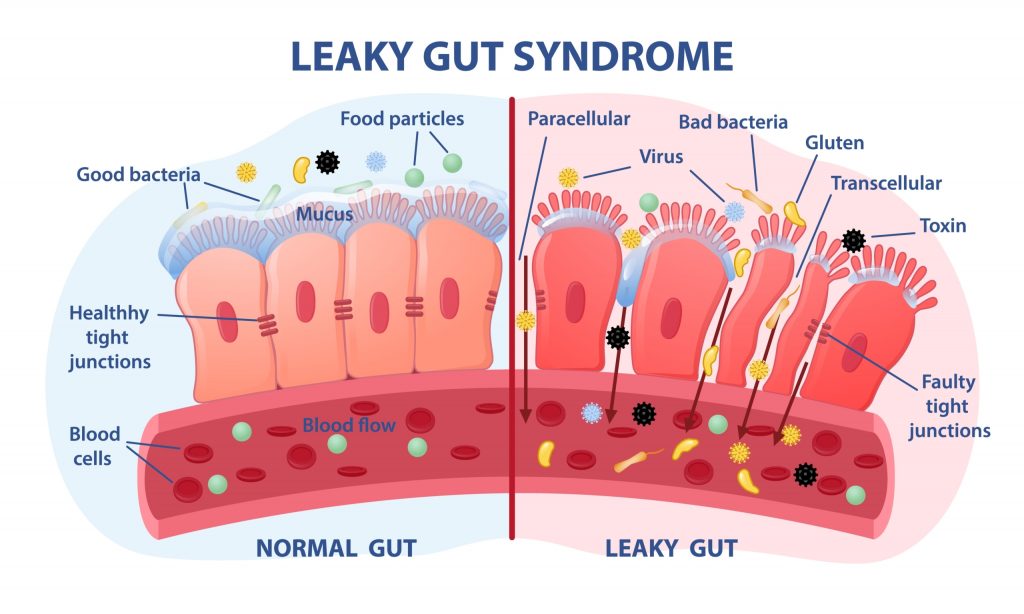
What is a leaky gut syndrome, is there any role of bacteria in that
Leaky gut syndrome, also known as increased intestinal permeability, is a condition where the lining of the gut becomes damaged, allowing partially digested food, toxins, and bacteria to leak through the gut wall and into the bloodstream.

This can cause inflammation and an immune response, leading to a variety of symptoms such as abdominal pain, gas, bloating, food sensitivities, and autoimmune diseases.
The gut microbiome plays a crucial role in the development of leaky gut syndrome. An imbalance in the gut microbiome, known as dysbiosis, can lead to an overgrowth of harmful bacteria and a reduction in beneficial bacteria. This can cause inflammation and damage to the gut lining, making it more permeable. Additionally, harmful bacteria can produce toxins that further damage the gut lining, exacerbating the problem.
Research also suggests that leaky gut syndrome can also lead to changes in the gut microbiome, as the leakage of toxins and undigested food particles can disrupt the balance of bacteria in the gut. This can further contribute to inflammation and damage to the gut lining.
There are several factors that can contribute to leaky gut syndrome, including poor diet, chronic stress, certain medications, and certain medical conditions. It can be treated by addressing the underlying cause, such as by improving diet, reducing stress, and treating any underlying medical conditions. Probiotics and prebiotics can also help to restore balance to the gut microbiome and support the healing of the gut lining.
How can we fix harmful colonies in gut and cultivate beneficial bacterial colonies?
There are several ways to fix harmful colonies in the gut and cultivate beneficial bacterial colonies:
1 Diet: Eating a diet high in fiber, fruits, vegetables, and fermented foods can promote the growth of beneficial bacteria. Avoiding processed foods, sugar, and excessive amounts of meat can also help to balance the gut microbiome.
2 Probiotics: Taking probiotics supplements that contain live bacteria and yeasts can help to replenish beneficial bacteria in the gut. They can be found in some fermented foods like yogurt, kimchi, kefir, and can also be taken as supplements.
3 Prebiotics: Prebiotics are non-digestible carbohydrates that serve as food for beneficial bacteria. They can be found in foods such as garlic, onions, leeks, asparagus, and bananas.
4 Reduce Antibiotics use: While antibiotics are important for treating bacterial infections, overuse can lead to the destruction of beneficial bacteria along with the harmful ones. If antibiotics are necessary, consider taking probiotics and prebiotics to help repopulate the gut with beneficial bacteria.
5 Avoid toxins: Avoiding toxins such as cigarette smoke, pesticides, and heavy metals can help to reduce inflammation and damage to the gut lining, making it easier for beneficial bacteria to thrive.
6 Reduce stress: Chronic stress can disrupt the balance of bacteria in the gut, so reducing stress through meditation, yoga, and other relaxation techniques can help to promote a healthy gut microbiome.
It’s important to note that it may take time to see the results and it’s also a good idea to consult with your doctor or a health professional before making any major changes to your diet or supplement regimen.
Can you name the batches of good and bad bacteria
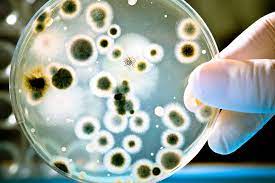
There are many different types of bacteria that make up the gut microbiome, and the balance of different types can have a significant impact on health. Some examples of beneficial bacteria that are typically present in a healthy gut microbiome include:
* Lactobacillus: This is a genus of bacteria that is commonly found in the gut and is known for its ability to produce lactic acid, which helps to maintain a healthy pH level in the gut.
* Bifidobacterium: Another genus of bacteria that is commonly found in the gut and is known for its ability to ferment carbohydrates and produce short-chain fatty acids, which provide energy for the cells lining the colon.
* Akkermansia: This is a species of bacteria that has been found to be associated with a healthy gut, it can help to reduce inflammation and improve gut barrier function.
On the other hand, some examples of harmful bacteria that can be present in an imbalanced gut microbiome include:
* Clostridium difficile: This is a species of bacteria that can cause diarrhea and colitis if it overgrows in the gut.
* Escherichia coli (E. coli): This is a type of bacteria that is commonly found in the gut, but certain strains can cause infections and lead to food poisoning.
* Salmonella: This is a type of bacteria that can cause food poisoning and infections in the gut.
* Helicobacter pylori: This is a type of bacteria that can cause stomach ulcers and stomach cancer if it persists in the gut.
It’s important to note that the presence of these bacteria does not necessarily indicate a problem, as they are present in most people’s gut in small amounts. However, an overgrowth of these bacteria or a disruption in the balance of beneficial and harmful bacteria can lead to health problems